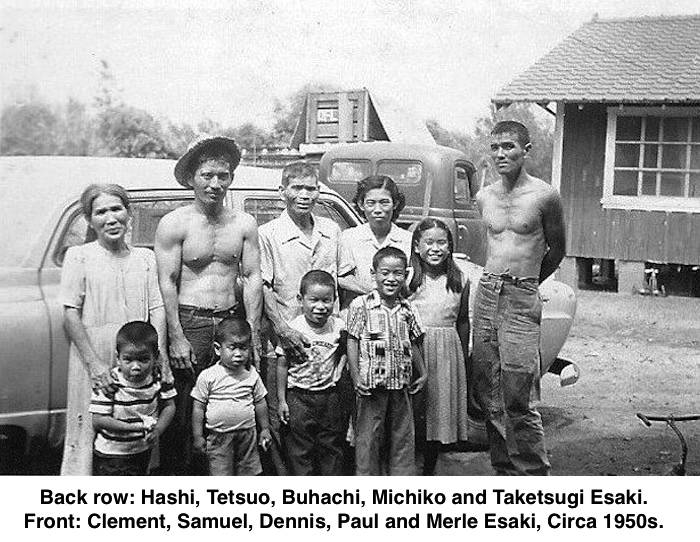
In 1945, after years of experimentation on his Anahola, Kauai farm, Joseph Taketsugi Esaki (1919-2010) developed his own variety of watermelon — the Esaki.
Basically, he did so by cross-pollinating and recrossing three standard varieties — the Klondike, the Chilean and the Tom Watson, and saving the seeds from these crosses.
“I selected the Tom Watson for its thin rind, the crispness of the fruit and the vigor of the plant,” he said in a 1945 newspaper interview, “and I chose the Chilean for its bright red color and the Klondike for its size.”
His Nov. 1945 crop, representing the fourth generation of plant breeding, produced the Esaki variety.
More specifically, he gave his watermelon vines a fighting chance against disease and insects by planting his seeds in a different place each year, isolated from other fruit and vegetable crops.
Also, during dry weather, he would haul water to his maturing plants from a stream in the hills in an 800-gallon tank mounted on a truck.
When blossoms first appeared, Esaki would carefully select plants to be pollinated and skillfully hand-pollinate them.
He would then tie a paper sack over each pollinated blossom to prevent them from receiving unwanted pollen from other plants.
Later, when pea-sized watermelons appeared, he would cover them with a tiny piece of cotton to stop melon flies from stinging and destroying them, and as the melons grew, he would continue the protective process by covering them first with small paper bags, then larger paper bags and, finally, pieces of cloth.
Nearly-full-sized watermelons required no covering, since their skins were so thick and hard that melon fly stings could not penetrate them.
After the fruit from his hand-pollinated blossoms were harvested at the proper stage of ripeness, he carefully segregated them from his other watermelons and labeled and stored their seeds.
By the way, to ward off watermelon thieves, he and his brother, Tetsuo, would guard them at night along with a couple of barking dogs.
And, nowadays, the only Esaki still farming is Godwin, the owner of Kapa‘a Banana Company.
"continued" - Google News
August 23, 2020 at 05:05PM
https://ift.tt/3aMxGLE
The continued story of Joseph Taketsugi Esaki's watermelon - Thegardenisland.com
"continued" - Google News
https://ift.tt/2WiTaZN
https://ift.tt/2YquBwx
Bagikan Berita Ini














0 Response to "The continued story of Joseph Taketsugi Esaki's watermelon - Thegardenisland.com"
Post a Comment